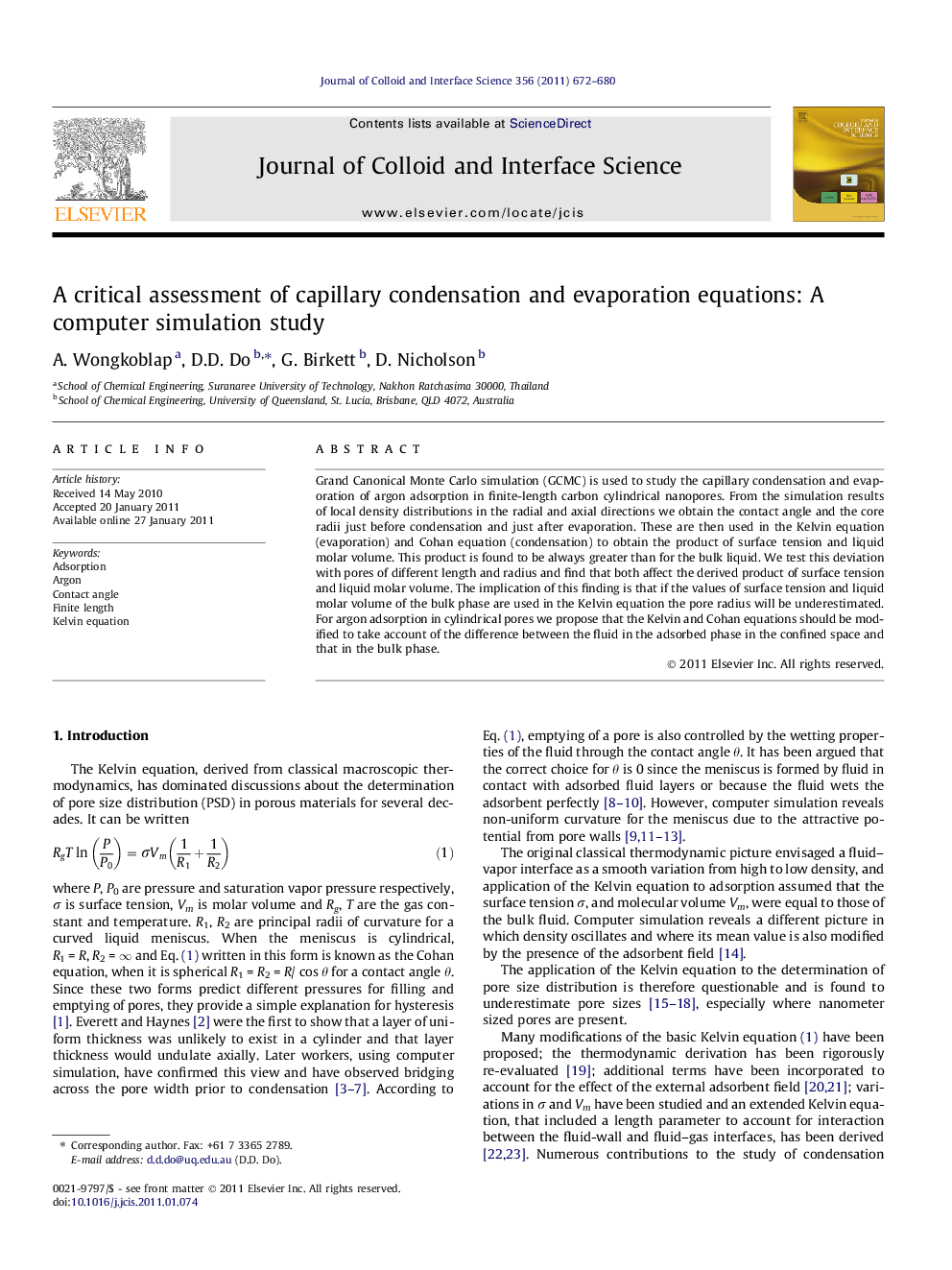| Article ID | Journal | Published Year | Pages | File Type |
|---|---|---|---|---|
| 608821 | Journal of Colloid and Interface Science | 2011 | 9 Pages |
Grand Canonical Monte Carlo simulation (GCMC) is used to study the capillary condensation and evaporation of argon adsorption in finite-length carbon cylindrical nanopores. From the simulation results of local density distributions in the radial and axial directions we obtain the contact angle and the core radii just before condensation and just after evaporation. These are then used in the Kelvin equation (evaporation) and Cohan equation (condensation) to obtain the product of surface tension and liquid molar volume. This product is found to be always greater than for the bulk liquid. We test this deviation with pores of different length and radius and find that both affect the derived product of surface tension and liquid molar volume. The implication of this finding is that if the values of surface tension and liquid molar volume of the bulk phase are used in the Kelvin equation the pore radius will be underestimated. For argon adsorption in cylindrical pores we propose that the Kelvin and Cohan equations should be modified to take account of the difference between the fluid in the adsorbed phase in the confined space and that in the bulk phase.
Graphical abstractSnap shot of argon particles in a carbon nanotube.Figure optionsDownload full-size imageDownload high-quality image (196 K)Download as PowerPoint slideResearch highlights► Critical assessment of the commonly used Kelvin and Cohan equations. ► The molar volume and surface tension in a pore space differ from the bulk phase. ► The pore size derived from the Kelvin equation is less than the correct pore size.
